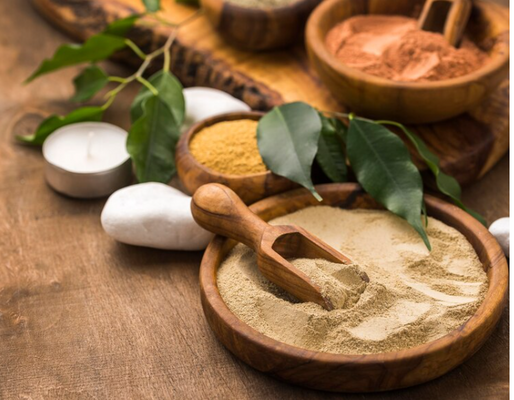
As the leaves change color and the wind whispers a new tune, our bodies often respond in unexpected ways. From sniffles and sneezes to fatigue and skin flare-ups, season changes can wreak havoc on our well-being. But fear not! Ayurveda, the ancient Indian system of holistic medicine, offers a treasure trove of wisdom to navigate these transitions smoothly.
Understanding Ritucharya: The Art of Seasonal Living
Ayurveda emphasizes the concept of Ritucharya, a seasonal routine that aligns your lifestyle with the prevailing energies of nature. Each season has its unique characteristics:
- Spring (Vasanta): Light, breezy, and blossoming, spring can aggravate Kapha (earth and water) dosha.
- Summer (Greeshma): Hot and dry, summer can exacerbate Pitta (fire) dosha.
- Monsoon (Varsha): Cool and humid, monsoon season can disrupt all three doshas (Vata, Pitta, and Kapha) due to fluctuating weather.
- Autumn (Sharad): Crisp and dry, autumn can increase Vata (air and space) dosha.
- Winter (Hemanta): Cold and damp, winter is Kapha-dominant.
By understanding the doshic influences of each season, we can adapt our diet, daily routines, and self-care practices to maintain balance within.
Nourishing Your Body Through the Seasons: The Ayurvedic Diet
Food is medicine, according to Ayurveda. Here's what your plate might look like across the seasons:
- Spring: Lighter meals are key. Opt for easily digestible vegetables like asparagus and leafy greens. Include sweet, sour, and pungent flavors to balance Kapha. Think springtime salads with lemon dressing or stir-fried veggies with a hint of ginger.
- Summer: Beat the heat with cooling foods like watermelon, cucumber, and coconut water. Choose astringent and bitter tastes to pacify Pitta. Enjoy a refreshing raita made with yogurt and cucumber or a bowl of bitter gourd salad.
- Monsoon: Navigate the dampness with warming spices like ginger, turmeric, and clove. Light, easily digestible meals are essential. Soups made with lentils and vegetables, or a simple kitchari (rice and lentil dish) seasoned with cumin, are perfect choices.
- Autumn: Embrace the grounding energy of the season with root vegetables like carrots, beets, and sweet potatoes. Include sweet, sour, and salty tastes to balance Vata. Enjoy a comforting roasted vegetable medley or a warm lentil stew.
- Winter: Nourish yourself with warming foods like soups, stews, and porridge. Include sweet, sour, and salty tastes to manage Kapha. Spiced lentil soup or a bowl of oatmeal with nuts and berries are ideal winter warmers.
Beyond the Plate: Ayurvedic Practices for Seasonal Wellness
Diet is just one piece of the puzzle. Here are some additional practices to support your well-being as seasons change:
- Spring: Embrace the energy of renewal with gentle exercise like yoga or walking. Early morning exposure to sunlight helps regulate your sleep-wake cycle.
- Summer: Prioritize cooling activities like swimming or spending time near water bodies. Opt for light, cotton clothing to allow your skin to breathe.
- Monsoon: Support your immune system with herbal teas like ginger tea or tulsi (holy basil) tea. Indoor activities like reading or meditation are great for this introspective season.
- Autumn: Engage in grounding activities like hiking or gardening. A daily abhyanga (self-massage) with warm oil helps balance Vata dosha.
- Winter: Prioritize sleep and relaxation. Gentle massages with warm oil and steam inhalation can help ease congestion.
Ayurvedic Tips for Children: Keeping Rashes at Bay
Children's sensitive skin can be particularly prone to rashes during seasonal transitions. Here are some Ayurvedic approaches to protect your little ones:
- Diet: Focus on easily digestible foods like cooked vegetables, fruits, and whole grains. Avoid processed foods, sugary drinks, and excessive dairy products.
- Self-care: Regular oil massages with coconut oil or sesame oil moisturize the skin and improve circulation.
- Clothing: Opt for natural fabrics like cotton and silk that allow the skin to breathe.
- Herbal remedies: Consider consulting an Ayurvedic practitioner for customized herbal preparations based on your child's specific needs.
Embrace the Rhythm of Nature: A Holistic Approach to Wellness
As we embrace the ever-changing tapestry of seasons, it's vital to prioritize our health and well-being. By embracing the timeless wisdom of Ayurveda, we can navigate seasonal transitions with grace and resilience. From nourishing our bodies with seasonal foods to adopting holistic practices for skin care, Ayurveda offers a holistic approach to wellness that empowers us to thrive in every season. At Ayurveda Living embrace the wisdom of Ayurveda and embark on a journey towards vibrant health and vitality, no matter the season. Click here to know more.
Note: The information in this article is intended for your educational use only and is not a substitute for professional medical advice, diagnosis, or treatment. Always seek the advice of your physician or other qualified health providers with any questions you may have regarding a medical condition and before undertaking any diet, supplement, fitness, or other health programs.





